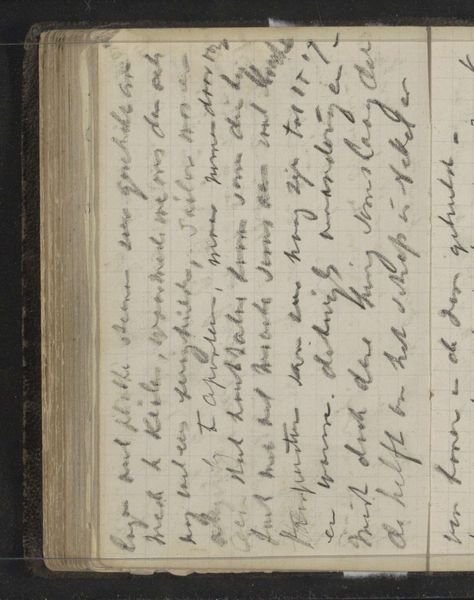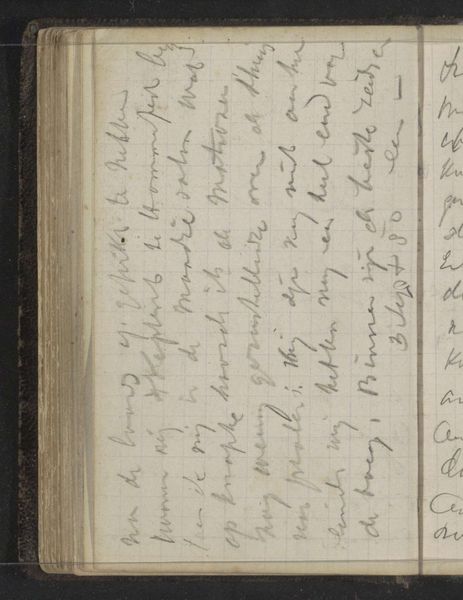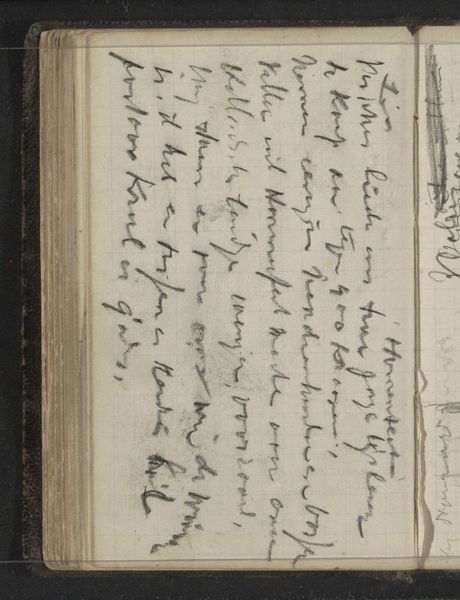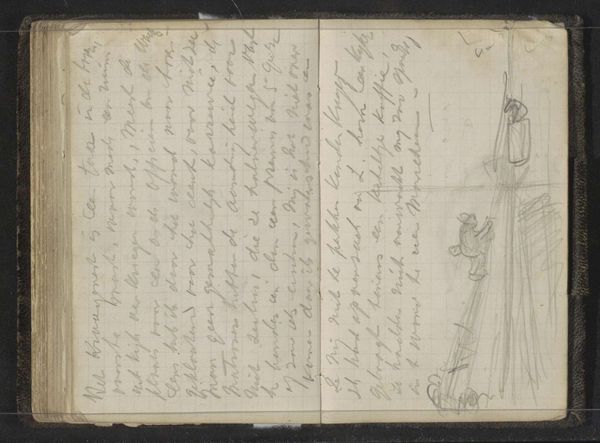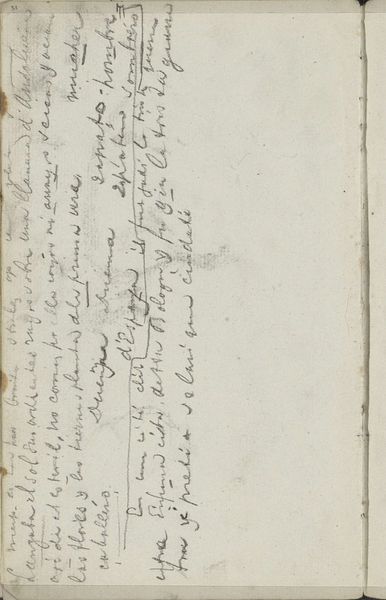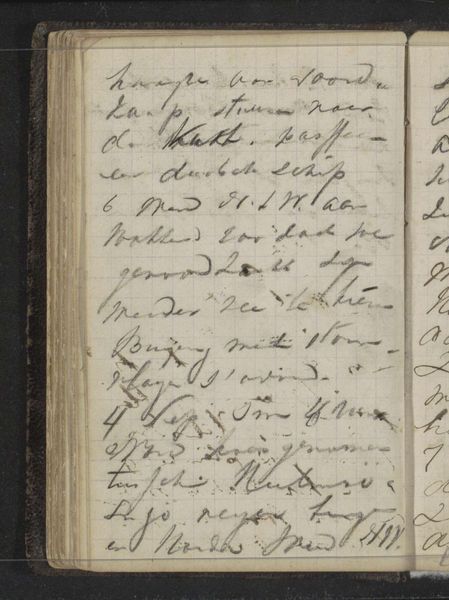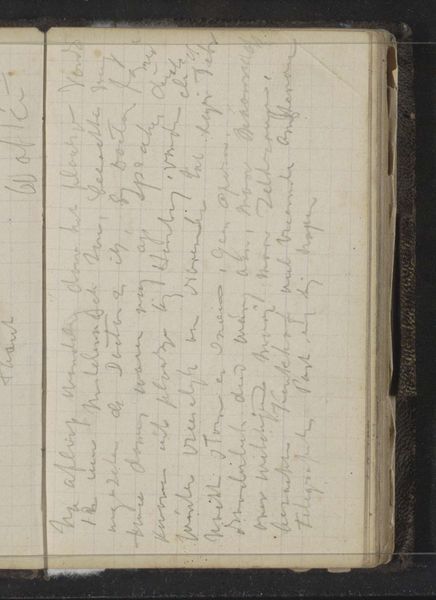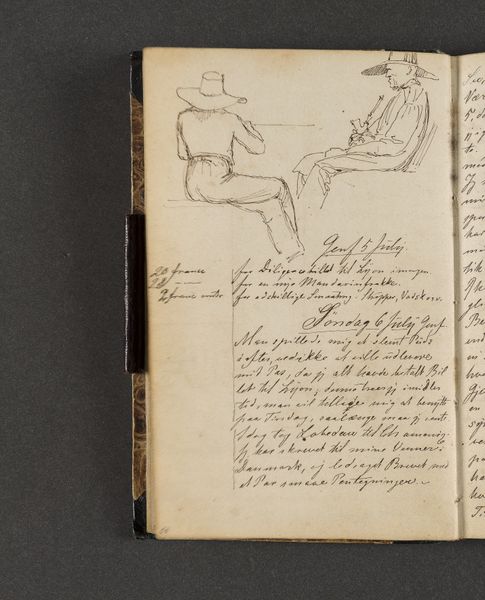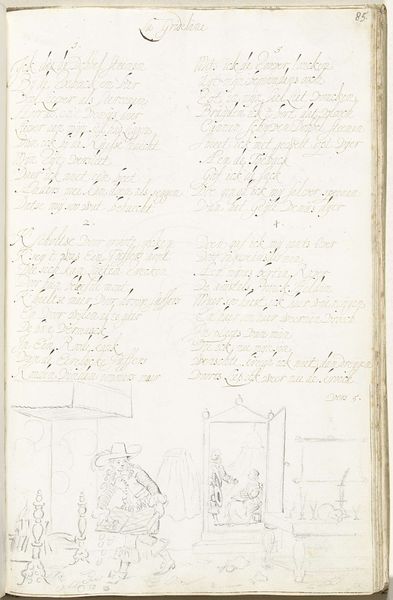
Copyright: Rijks Museum: Open Domain
Editor: Here we have "Reisverslag," or "Travel Journal," by Louis Apol, made around 1880 to 1887, using ink and coloured pencil on paper. It looks like a page torn right out of someone's personal sketchbook. The script is cramped, like the artist was in motion, and there are even some faint sketched figures! What can you tell me about this piece? Curator: This is a fascinating glimpse into 19th-century artistic practice. Consider how the rise of Romanticism fueled a fascination with travel and the natural world. Apol, known for his winter landscapes, uses this journal page as a direct record of his experiences. Note how the informality of the sketch challenges the institutional expectations of "finished" art. Does this looseness make you see the art or the artist differently? Editor: Definitely. Seeing this casual side makes it feel more intimate. Like a conversation with Apol. I suppose it would be similar to stumbling upon one of Claude Monet's sketchbooks, filled with those scribbles. I wonder, how would audiences have viewed these travel journals? Curator: Excellent point. These weren’t necessarily meant for public consumption in the same way as a salon painting. This challenges our modern understanding of art's role. Perhaps this intimate journal allowed Apol to explore ideas outside the pressures of the art market and academic expectations, providing a private space for experimentation. Editor: That makes sense. I see now how these works give us a broader and maybe even more honest sense of who artists were and how they lived and worked. It seems like, the casual setting allowed Apol more room to be expressive in his art. Curator: Precisely. And how institutions today can use these intimate works to reveal that social context!
Comments
No comments
Be the first to comment and join the conversation on the ultimate creative platform.
